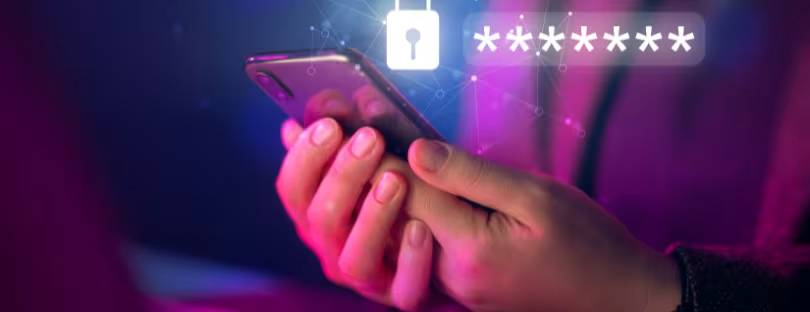
Over 320 Million Credit Cards to Be Issued Globally by 2027
A new study from Juniper Research has found that the number of credit cards issued via digital card issuance platforms will exceed 321 million globally by 2027, from 120 million in 2023. how to use credit card
This growth of almost 170% reflects the use of new advanced digital capabilities, such as digital loyalty schemes and instant issuance, as card issuers aim to combat competition, including buy now pay later.
Digital card issuance platforms allow card issuers to create cards using an API-driven approach; enabling cards to be delivered instantly to digital wallets, with the option for a physical card; boosting flexibility significantly.
Digital Issuance Critical to Addressing a $9.7 Trillion Opportunity
The new report, Credit Cards Strategies: Innovation Analysis, Digital Transformation & Market Forecasts 2023-2027, found that credit cards will account for over $9.7 trillion in spending globally by 2027. This represents a significant opportunity for card issuers to drive revenue growth by choosing the optimal credit card strategy. It found that rising affluence in emerging markets will be a significant driver of credit card adoption. As such, digital card issuance platforms are critical to delivering credit offerings in these mobile wallet‑dominated markets.
Research co-author Nick Maynard explained further: “In emerging markets, the ability to instantly issue digital cards will be a key factor in users choosing credit cards over other payment methods. Card issuance platform vendors must ensure localisation to enable cards to be quickly pushed to the wallets popular in each market.”
Trends in Credit Card Adoption and Use how to use credit card
Trends in credit card adoption and use are intrinsically linked to underlying card technologies, as well as the digitisation of payments.
-
Mobile Wallets
Mobile wallets’ steady rise to prominence as a payment method in recent years had its tipping point at the conjunction of long-standing attempts at creating cashless societies worldwide, and COVID-19’s effect on cash-free payments. Mobile wallets offer several other benefits, mostly convenience, speed, and security, as users do not need to remember PINs and passwords when making in-store purchases or fill in
security credentials when buying online. In the context of payments, these wallets are tethered to credit cards and enable users to store their transaction information in a single device. However, while they are enablers, they are also challengers to traditional credit cards, especially in the eCommerce domain. The primary delivery methods of these wallets are NFC and QR codes, which enable users to make in-person credit card payments at the POS, while some solutions can also combine various methods such as Bluetooth, and MST (Magnetic Secure Transmission – employed by Samsung).
One recent example of the conjunction of credit cards and mobile wallets is Apple Card, which launched in the US with Goldman Sachs in late August 2019, dubbed as a credit card designed for iPhone. The company aims to bolster its card proposition with Apple Pay Later, which can pave the way to Apple Card eligibility, as a standalone solution to be released in Spring 2023. Apple Card is available as a physical, metal card, which does not feature a card number, CVV, expiration date or signature on the card. Like traditional credit cards, it offers cashback on Apple, Apple Pay, Uber, and UberEats purchases, and instant rewards without an annual card fee.
Constituting an example for the use of mobile wallets akin to credit cards and more is PayPal’s app combining payments with QR codes for purchases and redeeming rewards in-store, accessing and managing credit, accessing BNPL (Buy Now Pay Later) services, buying, holding, and selling crypto, as well as supporting charitable causes. The app includes a loyalty programme, where customers can earn rewards redeemable for cashback and PayPal shopping credit on eligible purchases completed with PayPal. PayPal’s can be considered rivalling credit cards, as the company also offers two credit cards (which can be integrated into its app) in the US issued by Synchrony Bank, which is the exclusive issuer of the PayPal Credit online consumer financing programme (branded credit cards) in the country. In April 2022, Synchrony and PayPal collaborated for the latter’s new cashback credit card, which provides customers with an opportunity to earn unlimited cashback of 3% if they choose PayPal at the time of checkout for conducting either online, mobile, or in-store purchases.
-
Virtual Cards how to use credit card
Virtual cards are cards which exist only in digital form and are utilised for digital/online payments, and in some cases, over-the-phone and in-store payments.
They contain details such as the 16-digit number, expiry date, and CVV. However, unlike physical cards, there are several options, such as having a disposable, one-time card, whose unchangeable numbers are automatically randomised and generated for a designated transaction. These cards are linked to either debit or credit accounts, but account information is never shared with merchants. The underlying technology of virtual cards was first introduced to the payments market almost two decades ago, with the intention of countering payment fraud, and today, virtual cards are used for both personal and corporate accounts. The latter is an increasingly popular area, helping businesses enhance payment security, simplify payment reconciliation, and improve control over their processes for B2B payments.
-
Biometrics and Dynamic CVV (Card Verification Value)
Biometrics technology (mostly fingerprinting and voice recognition) stands out as an outlier for increased adoption of credit cards by individuals thanks to stronger authentication features inherent in biometric payment cards. Biometric cards simplify and further secure payments by storing the verification data on the card. It also eliminates the need for a PIN with an integrated fingerprint reader as an
authentication method. When a user’s/customer’s fingerprint matches the one already stored on their biometric card, the payment will be approved. The card also incorporates the secure element which contains EMV-compliant payment applications, such as in a traditional dual-face payment card. With the integration of a fingerprint reader, the biometric payment card adds an enhanced layer of security protection countering card theft, as well as fraudulent activity. One distinct benefit of biometric payment cards is the fact that they eliminate transaction caps. Since the integrated technology cancels PIN verification, doing so, also removes the upper limit on payment amounts. This is enabled by comparing the saved fingerprint templates with the cardholder’s fingerprint on the card, which is then if confirmed/verified, communicated to the consumer device verification method. The related terminal then approves higher-value payments when suitable.
Loyalty Rewards Critical to Credit Card Popularity
The research predicts that by 2027, the monetary value of rewards for users from credit card use will reach $103 billion globally, driving overall adoption. It recommends that card issuers focus on app‑based loyalty to maximise the appeal of these rewards; partnering with well-connected digital loyalty programme providers to maximise their appeal. If issuers fail to do this, they will lose out to better-connected vendors in a highly competitive credit card market. how to use credit card
Key players
American Express
Fiserv
Mastercard
Stripe
Thales
Visa
How to use a credit card?
Using a credit card can be a convenient way to make purchases, but it’s important to use it responsibly. Here are some tips to help you stay secure:
- Keep your card information private: Don’t give out your credit card number or other sensitive information unless you initiated the transaction and are certain of the recipient’s identity.
- Monitor your accounts regularly: Check your credit card statements frequently to make sure there are no unauthorized charges.
- Use a secure website: When making online purchases, look for websites that have the “https” prefix and a padlock icon in the address bar, which indicate a secure connection.
- Keep your card safe: Don’t leave your credit card unattended in public places, and keep it in a safe place when you’re not using it.
- Be cautious of scams: Be wary of unsolicited phone calls, emails or texts asking for your credit card information. Legitimate companies will not ask for this information over the phone or through unsecured channels.
Remember, being informed and proactive about credit card use can help you stay secure and enjoy the convenience of using a credit card.











